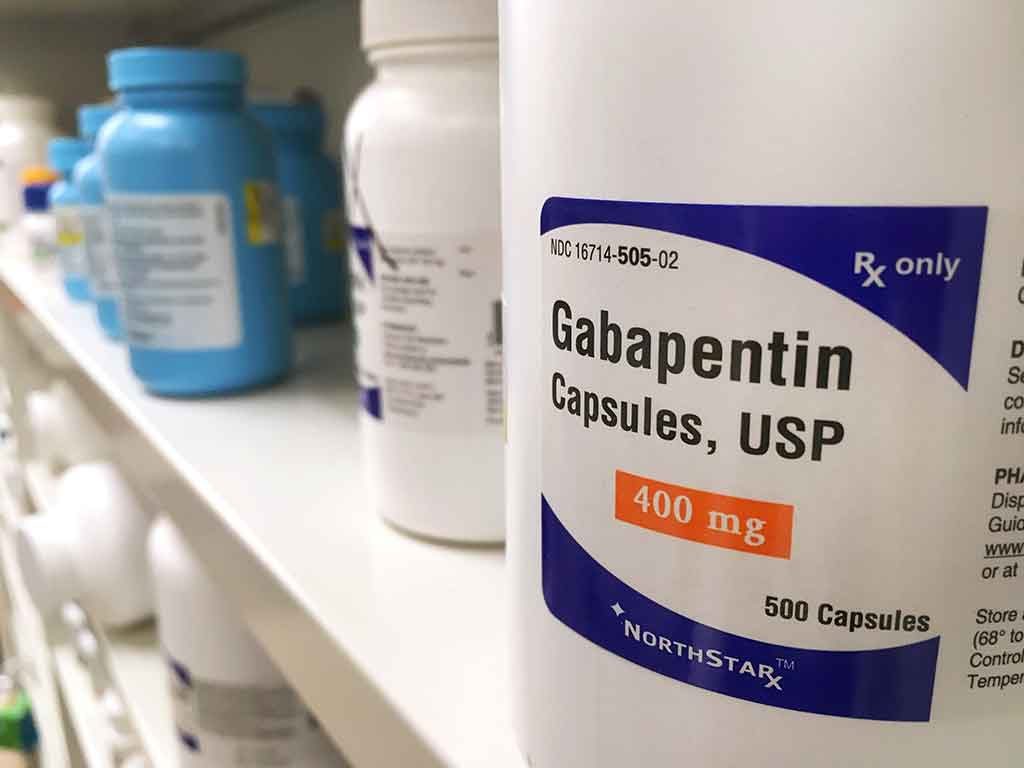Gabapentin Joins the Opioid Crisis
Gabapentin and similar gabapentinoids, like Lyrica, have now come to play a crucial part in the opioid crisis, thanks in large part to its being marketed as a safer alternative to opioid painkillers. Be aware of gabapentinoid warnings.
If you live in America, you’re probably at least peripherally aware that we’re in the midst of dealing with something referred to as an opioid crisis. The short version of what this means is that we, as a country, are experiencing a historically high amount of opioid overuse and addiction.
The serious uptick in opioid abuse is, for the most part, easily attributed to a significant increase in the number of doctors that have been prescribing opioid medications to patients dealing with pain issues. In many cases, this is happening to an alarming degree because these doctors have been reassured (sometimes misleadingly) that they were safe to prescribe and presented no real long-term problems down the line.
The people making these claims? The pharmaceutical manufacturers.
As a result, the opioid crisis has been a big area of focus for doctors and lawmakers alike. Both groups, in recent years, have been working hard not only to make sure that opioids are not as easily accessible — thereby lowering the potential for abuse — but also that pharmaceutical companies are no longer allowed to mislead doctors with regards to the long-term risks and dangers these drugs present.
Unintended Consequences
As the restrictions on opioid medications increase, however, so does the reliance on their alternatives — by both lawful and unlawful users, alike. Doctors have been turning to what are considered to be safer alternatives to popular opioid medications, and individuals seeking to abuse those medications are doing the exact same thing.
Unfortunately, the crackdown on opioid use has resulted in a handful of unintended consequences.
When it comes to abusers, reliance has shifted to drugs that are more easily-available. Since opioids have come under tighter restrictions from the federal government, it only makes sense to rely more directly on gabapentinoids, the family of drugs from which Gabapentin takes its name.
On the doctor side, the response has been pretty straightforward. Since opioids have been shown to be dangerously addictive, and abuse is at an all-time high, many doctors have sought to treat the same issues with different medications. Hopefully ones that don’t carry the same risks as opioids.
Enter Gabapentin.
What is Gabapentin?

Gabapentin, as it turns out, was not approved by the FDA for many of the issues that it’s commonly used to treat. This is actually a phenomenon known as off-labeling, and it’s a lot more common than you might think.
Drugs that were specifically designed, studied and approved to treat specific conditions are routinely prescribed for other uses.
The government (specifically the FDA, or Food and Drug Administration) has created laws to discourage pharmaceutical companies from actively pushing marketing of drugs for off-label purposes.
Doctors, however, have the green light. In fact, as a result, off-label use of gabapentin has become one of the most common responses to the opioid crisis, and the results have been somewhat less than ideal.
About 25 years ago, Gabapentin was approved and released onto the market for use as an anticonvulsant. However, since it works by effectively blocking communication, many doctors prescribe it as an alternative to opioid-based pain medication, assuming it to be a much safer alternative.
The only big problem with all this? We really don’t actually know if it is safer.
Why Is It So Potentially Dangerous?

The problems with this newfound reliance on Gabapentin aren’t limited simply to the fact that it can be just as addictive and habit-forming as the opioid medications to which it’s apparently supposed to be a safer alternative.
Not only is it being sought out as a more easily obtained alternative to opioids by addicts who are seeking specifically to abuse the drug, but it’s also causing unintended dependency in patients whose doctors are prescribing it for sustained use.
For one thing? There is little in the way of data that supports how safe or effective Gabapentin is, in the long-term.
We’re still not entirely sure as to how effective or potentially dangerous Gabapentin is, but doctors are prescribing it at a rapidly increasing rate. Prescription rates tripled between 2002 and 2015.
In other words, we’re using Gabapentin and other medications in its family at a rate that drastically outpaces the degree to which they have proven it to be effective for the desired outcomes.
The Potential for Abuse
Another problem with Gabapentin is that it’s been shown to be just as easily abused as opioids are. And if this weren’t an issue on its own, the relationship between gabapentinoids and opioids goes even deeper.
Gabapentinoids, as it turns out, can act as something known as a potentiator for opioids. This means that the chemical makeup of a gabapentinoid is such that it encourages the body to be more receptive to the active chemicals found in opioids. In other words, taking gabapentinoids and opioids together gets abusers an even stronger reaction.
Of course, the danger of overdose and addiction rises proportionately. The more these substances are abused, the more likely they are to have dangerous and unintended side effects, which can be as serious as overdose-related death.
In fact, the FDA recently found that gabapentin played a strong part in nearly a quarter of all opioid-related overdose deaths.
The takeaway here is that gabapentin is showing to be of little to no interest to the general public, in terms of abuse directly. When it comes to combining it with opioids, though, the rate of abuse for Gabapentin positively skyrockets. Contributing further to the painkiller crises that’s ravaging the health of those in the grip of its hold.
So Why Is It Still Being Prescribed?
Simply enough, Gabapentin is still being prescribed because it’s available, and an option to attempt pain control. Since the federal government has yet to regulate gabapentinoids as strongly as it controls opioids, they’re much more widely available and easily obtained, by both legal and illegal means.
A Safer Alternative to Opioids?
In the last couple of decades, our national levels of reliance on opioid medications have more than tripled. That’s a pretty big increase in a drug that’s relatively dangerous, not only because it comes with high risk for addiction, but also because it comes with a high risk for overdose.
As the rates of abuse-related overdoses and death began to climb, the government started to step in and restrict the availability of these medications. Doctors weren’t able to prescribe them as frequently or as often, and so safer alternatives were sought.
Since off-label use isn’t against the law, doctors are free to prescribe Gabapentin (and other, similar drugs, referred to as “gabapentinoids”) as they see fit, even for treatments that have not been explicitly studied or approved by the FDA.
The Gabapentin Paradox
So now you’re probably wondering: What does Gabapentin have to do with peripheral neuropathy? Quite a lot. Not only is it one of the more commonly prescribed medications for neuropathic pain, but it’s becoming more and more popular for pain treatment in general. Since doctors have been less and less able to lawfully prescribe opioids for pain relief, Gabapentin has become the next best thing. Since it is so far less controlled, doctors have come to rely on Gabapentin at an increasing rate, when it comes to treating the often painful symptoms that can come from peripheral neuropathy.
Gabapentinoids act on the body by essentially dampening signals that our nerves are sending. Since seizures, in many ways, are essentially catastrophic misfirings of the nervous system, this makes gabapentinoids relatively effective when it comes to reducing the risk for dangerous seizures.
However, the way Gabapentin works is debated among researchers, but the current most popular belief is that it affects GABA and glutamate — neurotransmitters essential to the function of your nerves. This drug is essentially flipping an “off-switch” to block pain. But on the opposite side of this coin sits the fact that your nerves are not only responsible for sending pain signals. They do a lot of other important work too, and Gabapentin is now beginning to be held responsible for contributing to the long-term effects of nerve damage.
This means that, while Gabapentin is effective for some people and types of nerve dysfunction to dampen pain, they don’t necessarily stop there. And eventually, they may go from quieting your nerves, to damaging them (and there’s research going back all the way to about 1992 that supports this).
Studies have shown us that the risks of Gabapentin may be outpacing the benefits we get from their use.
So What Next?
When it comes to Gabapentin, all we can really do is make the safest and most informed decision for ourselves. Knowledge is power in a situation like this. The more well-informed you are about your medications and the risks they possess, the more effectively you can make decisions that are safe for your long-term health.
If you’ve found yourself suffering from something like peripheral neuropathy, or another condition that involves long-term chronic pain, you might have been prescribed a gabapentinoid by your doctor. Despite your doctor’s best intentions for symptom management of peripheral neuropathy, is symptom management best for you?
The more you know, the more confidently you can navigate the sometimes complicated landscape of your health plan. You are your own best advocate, and the more informed you are, the better your outcome. If you set your goal for neuropathy on healing, learn how lifestyle changes can support your own body’s healing processes.
Can Exercise Reverse Neuropathy?

While painful symptoms of peripheral neuropathy might make it seem like exercise is not a good idea, this couldn’t…
2 Most Powerful Anti-Inflammatory Antioxidants

Did you know that your diet goes a long way toward helping you keep your nervous system healthy? The…
3 Best Essential Oils for Soothing Nerve Pain

Peripheral neuropathy comes with a number of different symptoms, each one seemingly more troublesome than the last. A little…
Top Red Light Therapy Devices for At-Home Neuropathy Treatment

Encouraging nerve regeneration is key to recovering from neuropathy. There are many ways for helping your body do what…